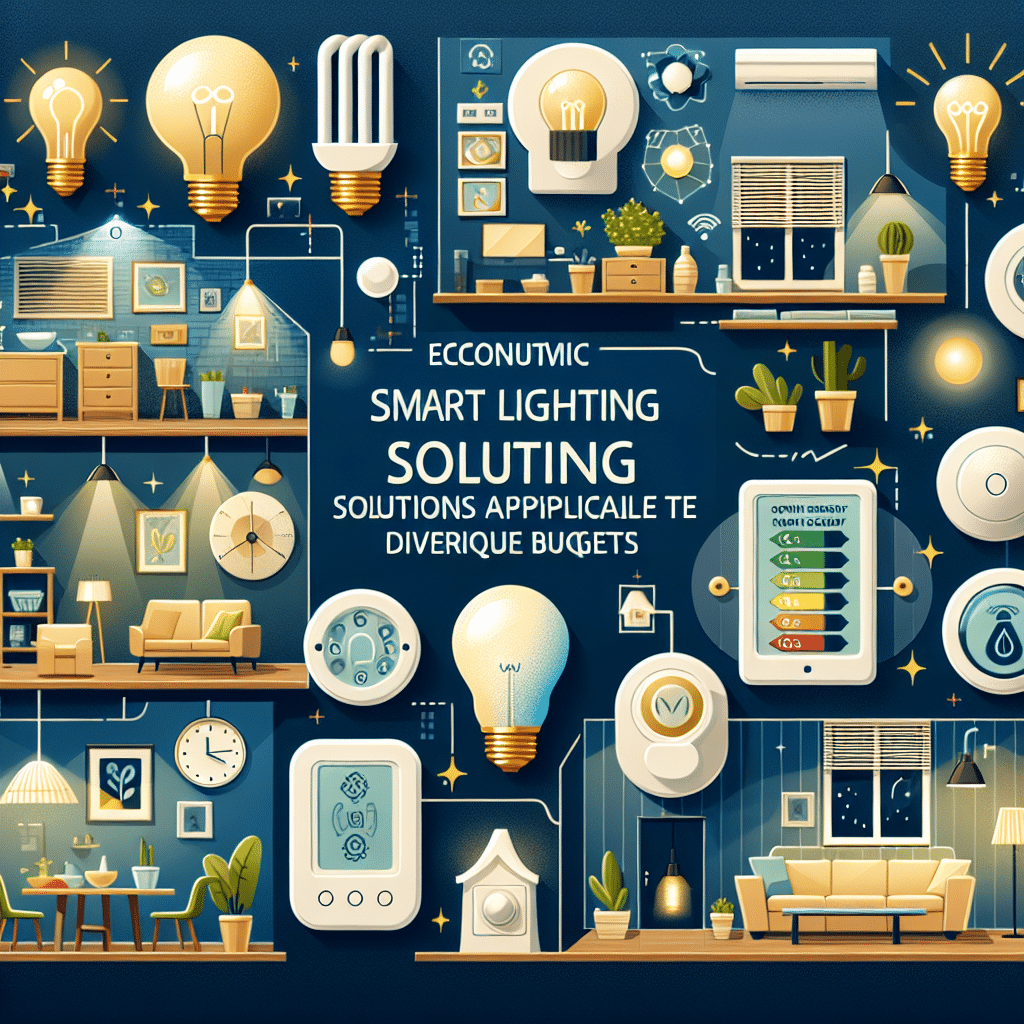Understanding Smart Lighting
Smart lighting has revolutionized the way we illuminate our spaces, combining energy efficiency, convenience, and enhanced control. These systems allow users to adjust brightness, color, and scheduling, often through smartphone apps. Fortunately, diverse options cater to varying budgets, ensuring that everyone can benefit from smart lighting solutions.
Features of Smart Lighting
-
Remote Control: Most smart lights come with mobile apps, enabling control from anywhere. This feature allows users to adjust settings when not at home.
-
Voice Control: Many smart lighting systems are compatible with voice assistants like Amazon Alexa, Google Assistant, and Apple Siri, lending hands-free operation.
-
Scheduling: Users can program lights to turn on/off or change color according to daily routines.
-
Energy Efficiency: LED smart bulbs utilize less energy than traditional bulbs, reducing electricity bills while offering longer lifespans.
Budget-Friendly Options
Under $20
-
Wyze Bulbs: Priced around $15, Wyze bulbs support both white and colored lighting. They are compatible with Alexa and Google Assistant and offer a user-friendly app for easy control.
-
Meross Smart Wi-Fi Bulbs: Available for approximately $12, these bulbs require no hub and feature dimmable white light, RGB options, and are completely compatible with major smart home ecosystems.
$20 to $50
-
Philips Hue White and Color Ambiance A19 LED Smart Bulb: For about $35, this bulb is part of a widely popular smart lighting ecosystem. It supports scheduling and can be customized with various color settings. While a Hue Bridge is sometimes necessary, starter kits offer affordable integration options.
-
LIFX Mini Color Smart Bulb: Priced around $30, the LIFX Mini connects directly to the Wi-Fi network, eliminating the need for a hub. It features rich color options and is compatible with both Alexa and Google Assistant.
-
TP-Link Kasa Smart Light Bulb: For approximately $25, this bulb provides white and color options and boasts easy app integration with scheduling features. Users also enjoy a straightforward setup process.
$50 to $100
-
Philips Hue Starter Kit: This set, which includes three bulbs and the Hue Bridge, starts at around $70. It’s an entry point into the extensive Hue ecosystem, which supports dozens of integrations with various smart home devices.
-
LIFX Color 1000 A19: With pricing around $60, this bulb features vibrant color options and high brightness levels, perfect for living spaces and outdoor settings. It integrates well with home automation systems and provides high functionality.
-
Wyze Cam V3 with Smart Light Kit: This smart lighting kit retails for about $60. The kit combines effective security monitoring with smart outdoor lighting, creating a comprehensive home security solution.
Over $100
-
Philips Hue White and Color Ambiance Lightstrip Plus: At about $90 for a 6.5-foot strip, this product offers robust smart lighting for both ambiance and functionality. Users can trim the lightstrip to fit their spaces, making it versatile for various settings.
-
Nanoleaf Shapes: This modular lighting solution ranges from $150 upwards. These panels can be arranged creatively to enhance interior design while providing dynamic color and light patterns.
-
LIFX Z LED Lightstrip: Priced around $80, this lightstrip provides the highly customizable option of RGB lighting. It can be connected to smart home systems and controlled via mobile applications.
Essential Accessories
To further enhance smart lighting solutions, consider investing in accessories that improve functionality.
-
Smart Plugs: Priced around $15, smart plugs convert regular lamps into smart devices. Brands like TP-Link and Wemo support both scheduling and voice commands.
-
Smart Switches: For homeowners looking to convert traditional lighting, smart switches can cost between $30 to $60. Products from Leviton and Lutron facilitate the seamless integration of smart lighting into existing fixtures.
-
Hub Systems: If using multiple smart devices, investing in a hub like the Samsung SmartThings Hub (around $70) allows centralized control, enhancing compatibility and ease of use.
Installation Process
Although many smart lighting products promise easy installation, following an efficient process ensures optimal use.
-
Preparation: Gather the necessary tools (screwdriver, etc.) and read the instruction manual for the specific product to understand particular requirements.
-
Download Application: Most smart lighting systems come with accompanying apps. Downloading the appropriate app is crucial before installation.
-
Install Bulbs or Strips: For bulbs, simply replace them with standard ones. If installing light strips, clean the mounting surface, peel back the adhesive backing, and apply.
-
Connect to Wi-Fi: Utilizing the manufacturer’s app, connect your lighting devices to your home’s Wi-Fi network for remote access.
-
Custom Settings: Once connected, customize lighting options in the app according to preferences, setting schedules and colors as desired.
Conclusion
Smart lighting allows users to tailor their environment to suit any mood or occasion, enhancing both functionality and aesthetics. With affordable solutions available across various price ranges, anyone can take advantage of this impressive technology. By selecting the right products and accessories, maximizing smart lighting potential becomes feasible for every budget. Embrace the future of home illumination today, no matter your price point.
